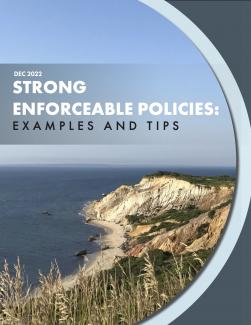
Enforceable policies (EPs) are the backbone of federal consistency review. They provide the substantive standards on which state and territorial coastal management programs (CMPs) rely to influence federal actions in and affecting the coastal zone through the federal consistency process, pursuant to Section 307 of the Coastal Zone Management Act (CZMA) (16 U.S.C. § 1456). The process allows states and territories (hereafter referred to as “states”) to review not only proposed federal agency activities (e.g., navigation dredging by the Army Corps of Engineers), but also proposed activities by any non-federal entity requiring a federal license, permit, or permission (e.g., a Clean Water Act Section 404 permit). In general, if a state identifies one or more specific enforceable policies with which a federally authorized activity would be inconsistent, the permit or license may not be issued.
The enforceable policies of coastal management programs vary significantly within and across coastal states and territories, both in content and in form. This is due both to differences between states’ laws and regulations and to choices made by states in developing and maintaining their National Oceanic and Atmospheric Administration (NOAA)-approved coastal management programs. In a legal context, some EPs are clear in their mandates and constructed well for federal consistency review purposes; others are not. Certain coastal resources, uses, and issues are addressed robustly in some states’ EPs, but less so in others. However, all CMPs are established and governed by living documents, which can be updated through the “program change” process (subject to NOAA’s approval), meaning states can decide to incorporate new or revised enforceable policies into their programs at any time.
This document highlights good examples of enforceable policies from across ten states whose coastal programs were reviewed by the Environmental Law Institute in 2020 and 2021: California, Florida, Mississippi, New Jersey, New York, North Carolina, South Carolina, Texas, Virginia, and Washington. The examples, explanations, and discussions of policies’ strengths and weaknesses primarily focus on an illustrative subset of high value habitat types—tidal wetlands, submerged aquatic vegetation (e.g., eelgrass), and oysters—but also cover topics such as open ocean habitat and climate adaptation. However, these examples are intended to be useful beyond their specific subject matter, helping to shed light on the characteristics of strong EPs more generally.